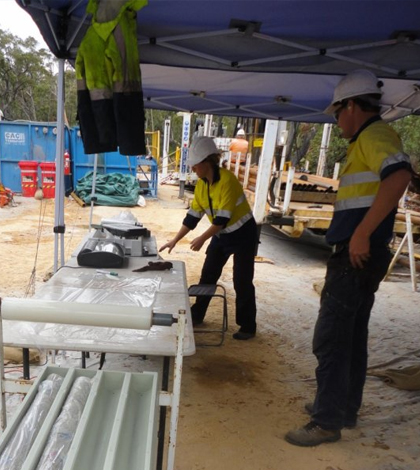New Method Provides Inexpensive Way Of Tracing Groundwater

Researchers preserves samples of moist rock collected by drilling a 300-meter deep core. (Credit: UNSW)
Groundwater monitoring is getting a makeover, according to a release from the University of New South Wales detailing a new isotopic method developed by scientists there. Instead of using the typical time-consuming and relatively expensive procedure of drilling several boreholes to gather samples for groundwater monitoring, the new method requires only one core sample and uses isotopes of hydrogen and oxygen to identify groundwater origins.
The single core sample used for the new isotopic method was 300 meters deep. Small sections of the moist rock were preserved and analyzed later in the lab with an advanced laser for hydrogen and oxygen isotopic signatures of the water within.
Hundreds of rock samples were gathered from the single core. The groundwater was found to move through four different zones of rock as it traveled downward. Water deep in the core was found to be much like water in modern rainfall in terms of isotopic signature, meaning the Sydney Basin water being analyzed had been stable for thousands of years.
Top image: Researchers preserves samples of moist rock collected by drilling a 300-meter deep core. (Credit: UNSW)





0 comments